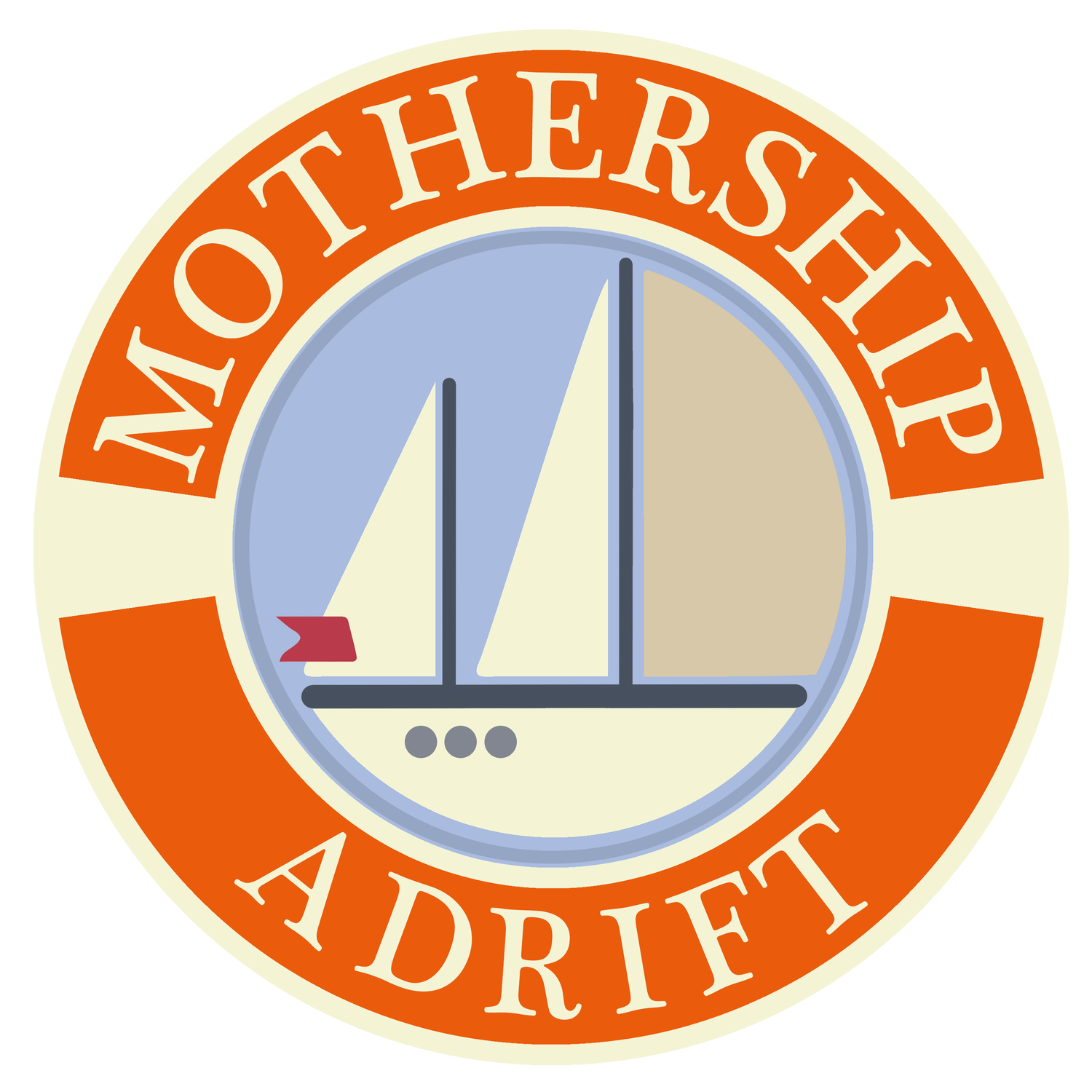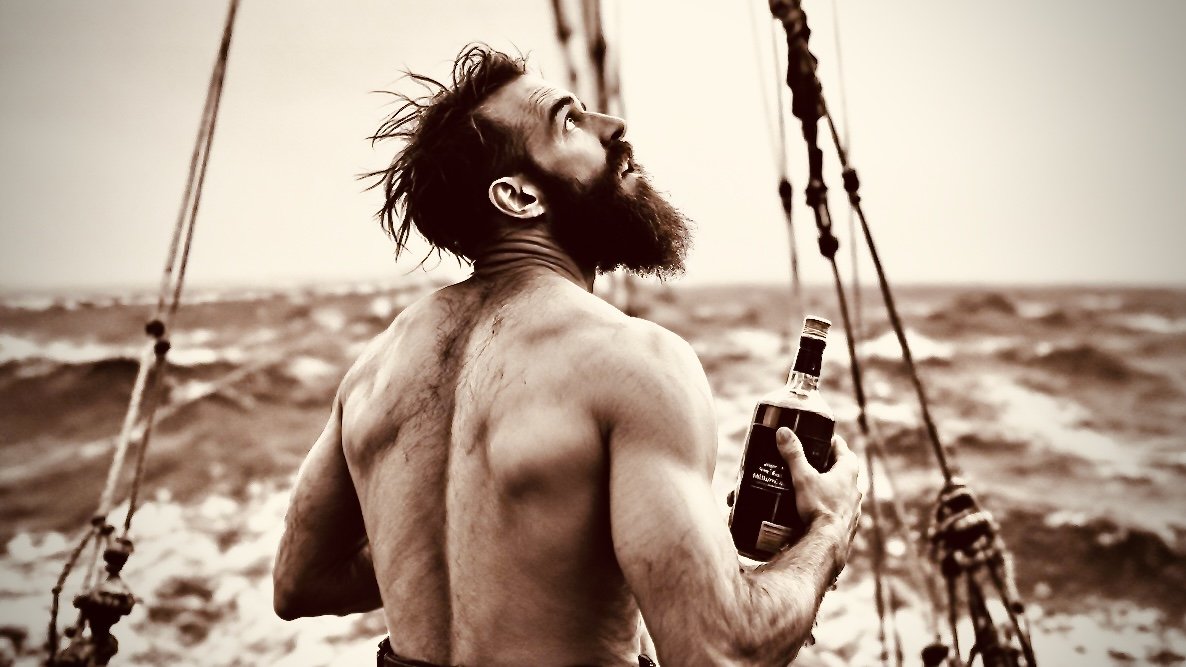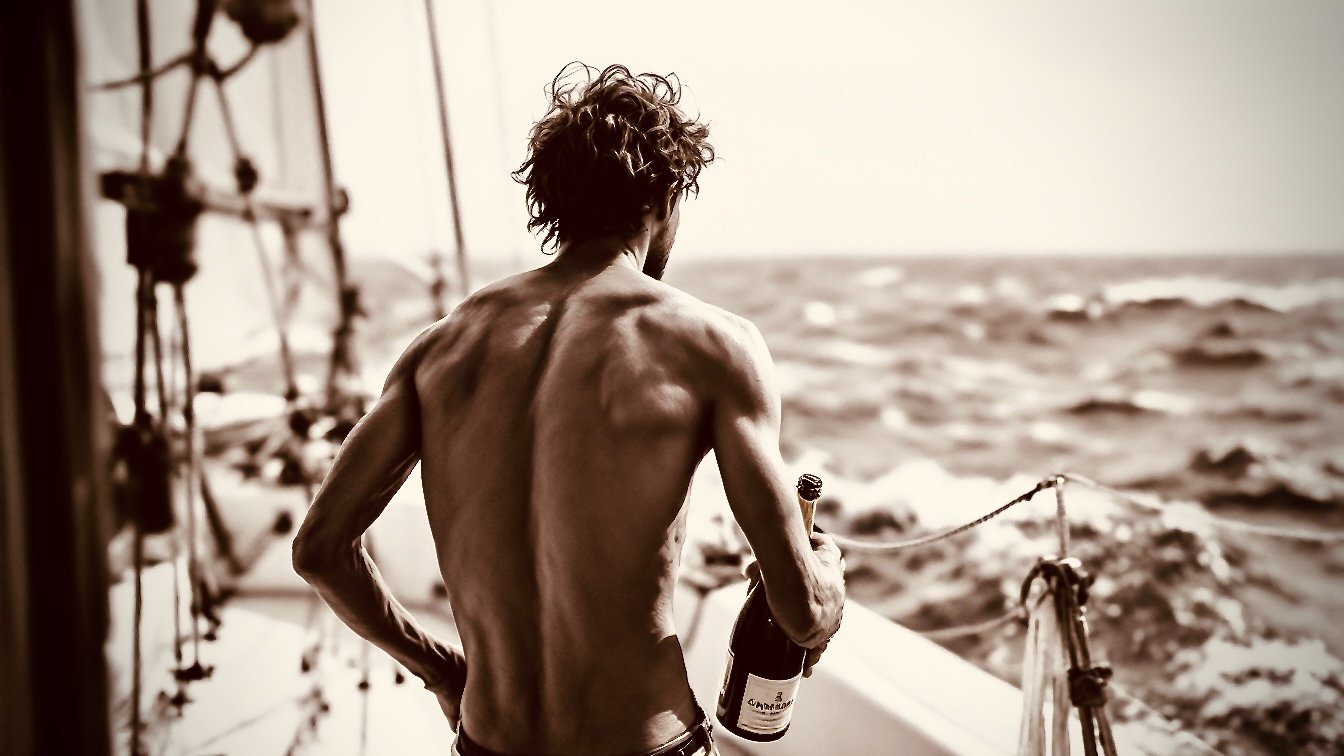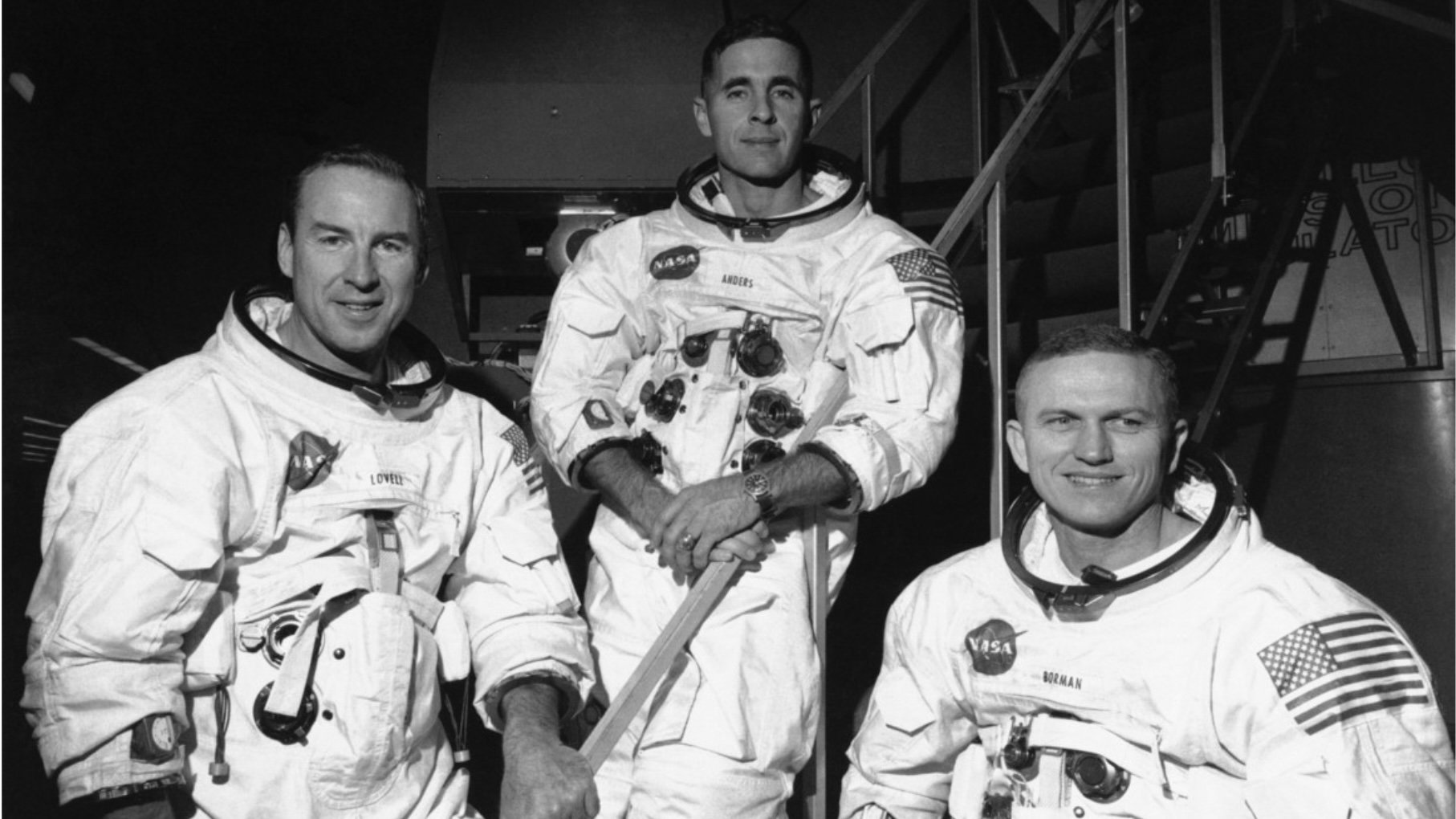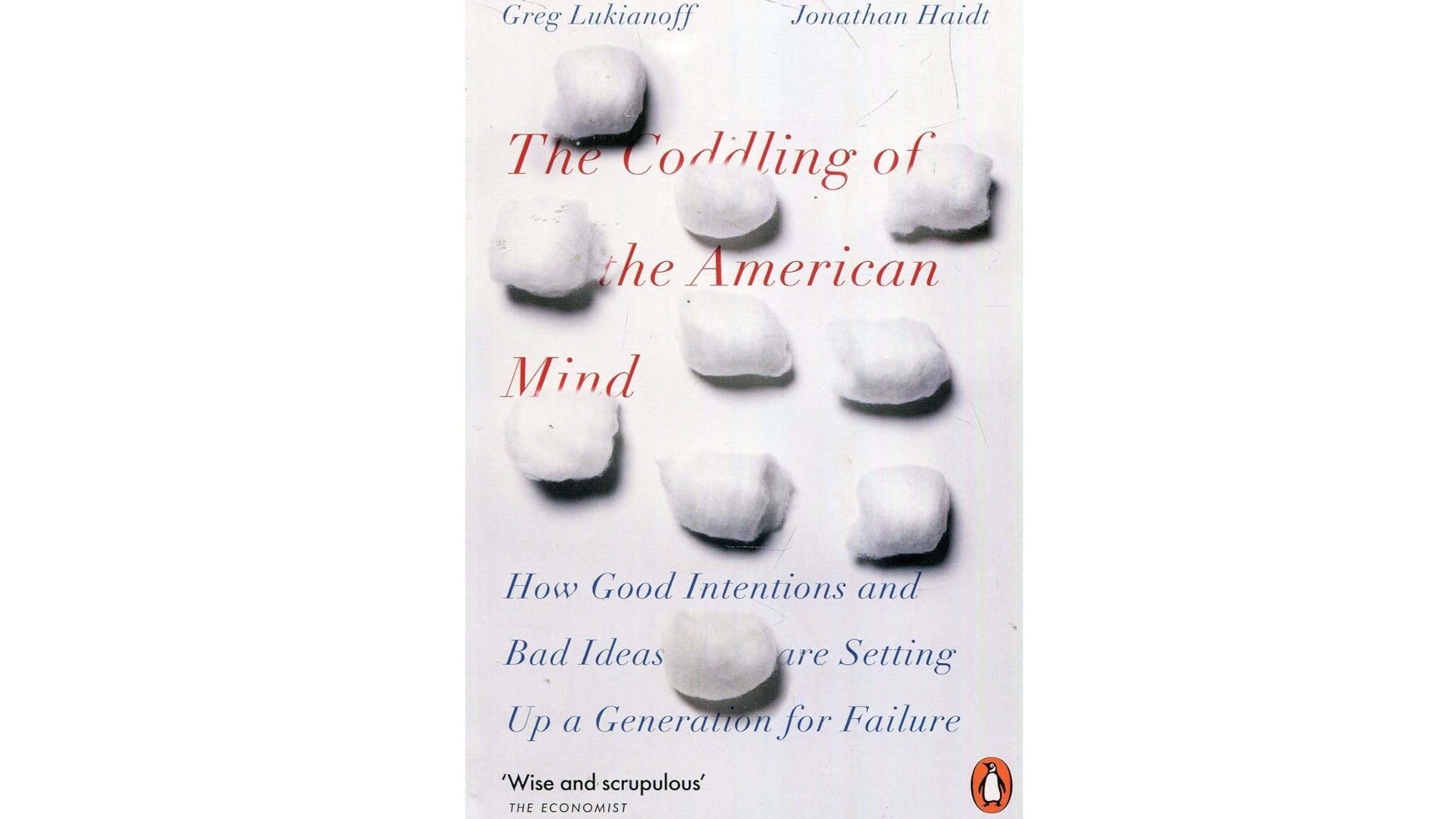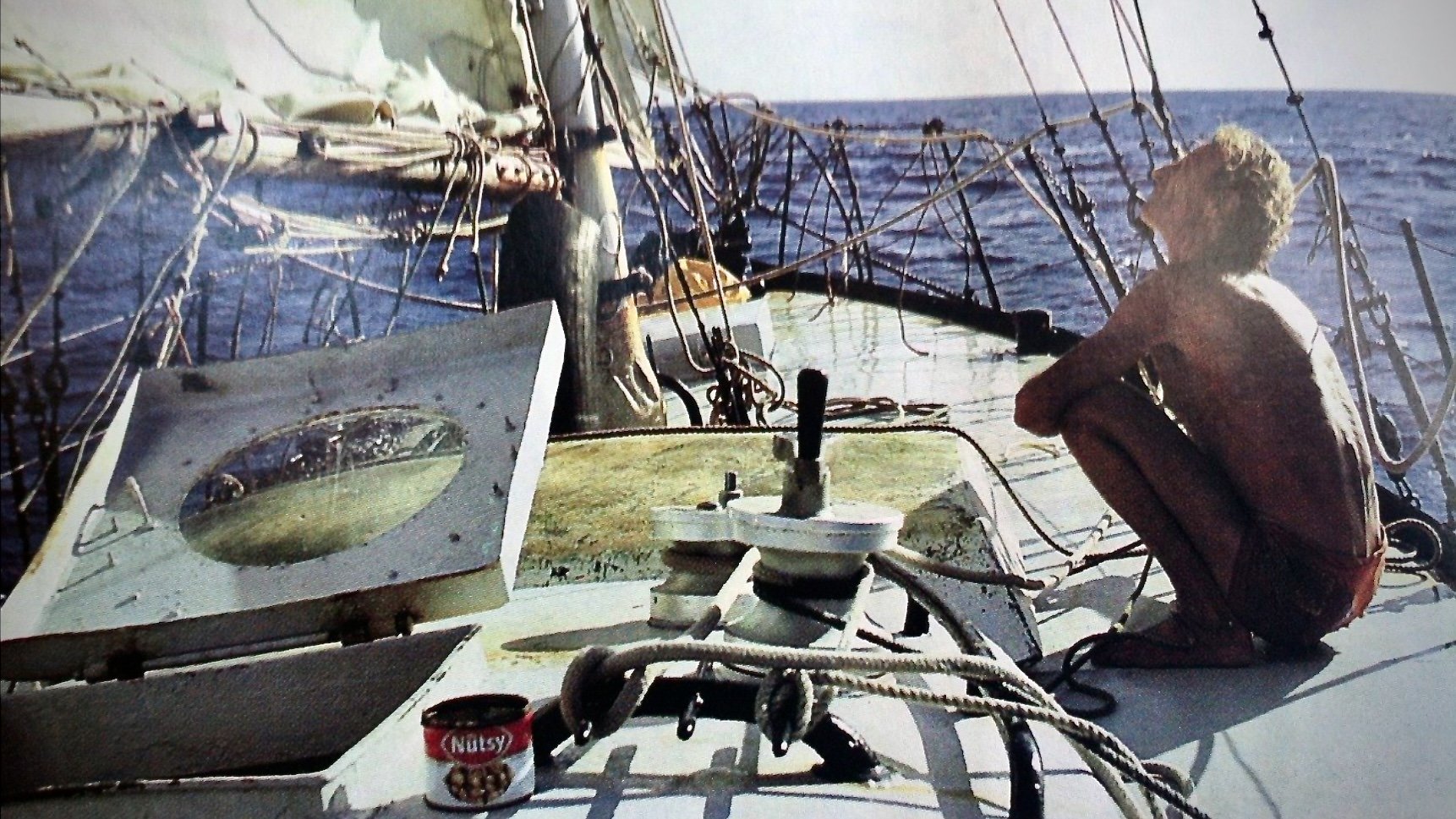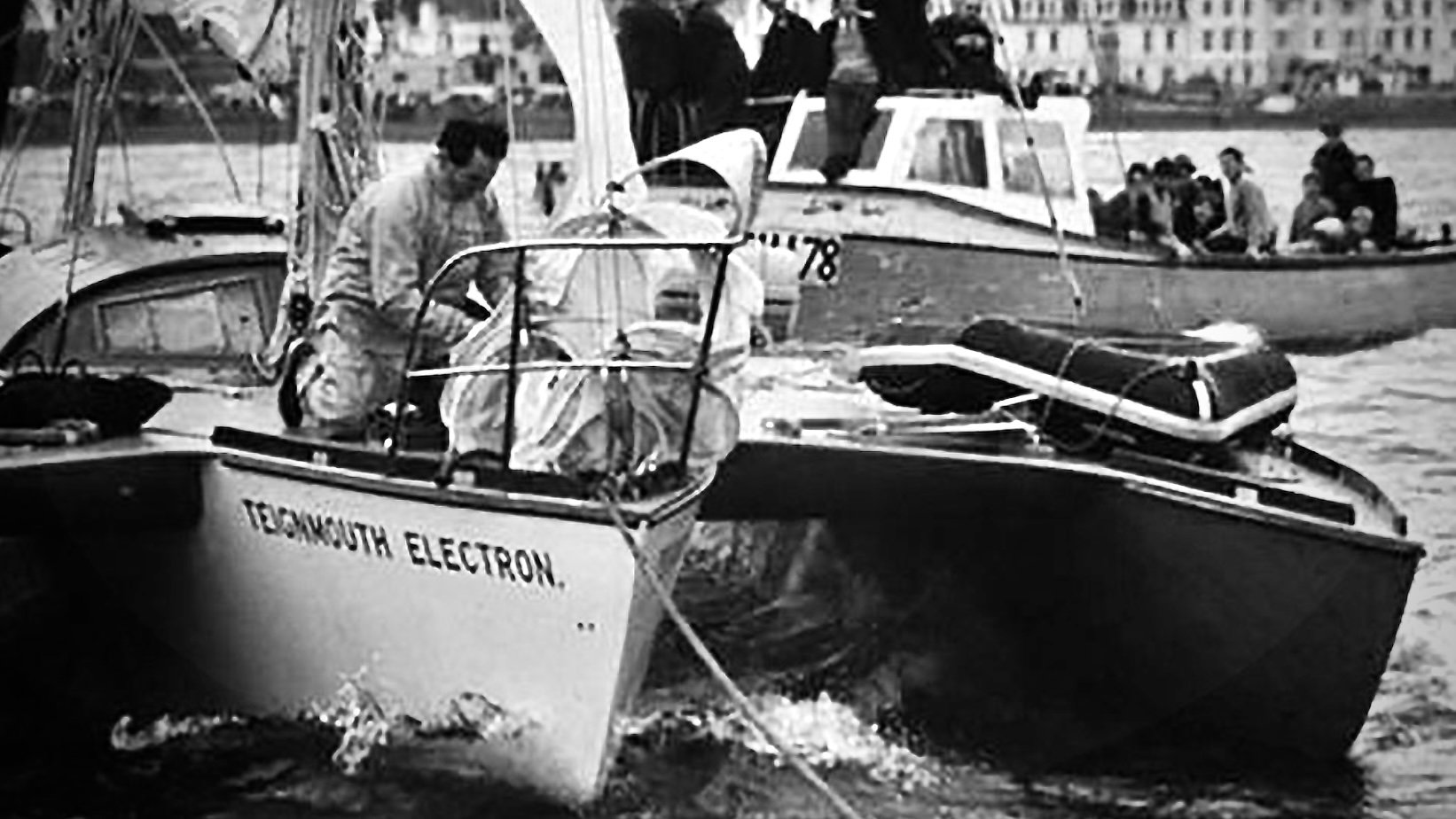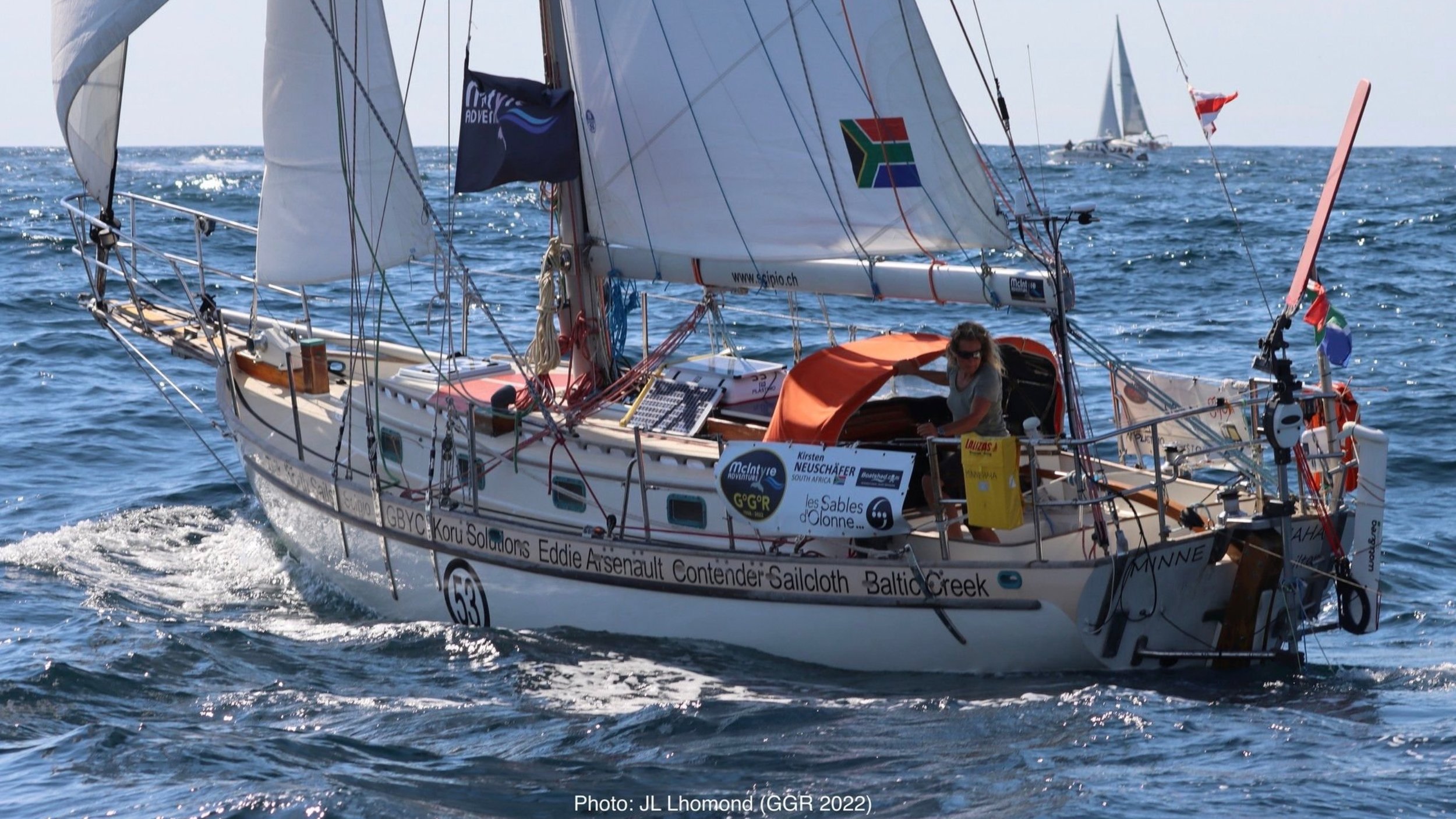A Voyage for Madmen
01-03-05
“It is surprising that we call this planet Earth when it is clearly Ocean”
Reports of American men flying around the moon might have raised a toast from the British and French, Golden Globe competitors far below.
Earthrise
On the 24th of December 1968, Apollo 8 was halfway through its mission to test spacecraft systems and gather data in preparation for the first-ever Moon landing. It was the first crewed mission to leave Earth's orbit and circle the Moon.
As the command module emerged from behind the lunar horizon on its first orbit, the crew witnessed the breathtaking sight of the Earth rising above the desolate lunar landscape. NASA astronaut William Anders quickly grabbed his camera and captured the now-iconic 'Earthrise' photograph of our pale blue, fragile planet, poignantly set against the infinite blackness of space.
Earthrise is considered to be one of the most iconic and influential photographs ever taken. NASA / Apollo 8, AS08-14-2383, ‘Earthrise’ photograph, public domain.
That single shot, taken at the height of the Vietnam War, is now credited with galvanising environmental and peace movements around the globe.
Now, if Anders had a particularly powerful lens that day, he could have focused it on a nondescript town in the North of England where, through the window an equally nondescript terraced house, he would have witnessed Mrs Rosemary Wood about to give birth to a baby boy. Me!
Tracking south over England and the English Channel, down over the Bay of Biscay, and across the South Atlantic into the Southern Ocean, Anders might have witnessed another momentous event: Robin Knox-Johnston, standing naked at the helm of a wooden craft, empty whisky bottle in hand, screaming profanities at the elements.
Robin Knox-Johnston as imagined in the Southern Ocean on Christmas day, 1968 on his boat Suhaili in the 1968 Golden Globe Race. © Alan Wood, AI-generated image with original creative input as no known photo exists
With the self-steering system and radio transmitter broken, his beleaguered craft was more of a mobile workshop than a boat, and the isolation of Christmas had driven him to exceed his already impressive drinking quota. In his logbook, he mentioned hearing a report of American men flying around the Moon, and perhaps he would have looked up at that very moment and raised a toast to Anders and his fellow adventurers.
You can imagine Anders pointing at his camera and telling his fellow astronauts, ‘Guys, you’ve got to come and see this!’
Now, if Anders had tracked his lens 1,000 miles east, he might have seen another boat nipping at the heels of the eccentric British adventurer. The Frenchman Bernard Moitessier, also naked, swigging the dregs from a bottle of warm champagne, staring out into the vast ocean and muttering to himself about the ‘snake pit’ of civilisation.
Bernard Moitessier as imagined in the Southern Ocean on Christmas day, 1968 on his boat ‘Joshua’ in the 1968 Golden Globe Race. © Alan Wood, AI-generated image with original creative input as no known photo exists
Moitessier was so anti-technology that he refused to even carry a radio onboard for communication, choosing instead to use a catapult to fire his position and reports onto the decks of passing ships.
The two men were front runners in the first solo, non-stop, round-the-world sailing challenge, the Golden Globe Race. It was a race that thrust sailors into a gruelling test of endurance and isolation like no other; a legendary race that later became known as the “The Voyage for Madmen.”
“Voyage for Madmen” by Peter Nichols telling the story of the 1968 Golden Globe Race
The manner in which the two sailors faced the mountainous seas and gales of the Southern Ocean couldn’t have been more different. Robin Knox-Johnston was spurred on by thoughts of beer, steak, a hot bath, and women upon his return. Moitessier daydreamed of contemptuously snatching the £5k prize money from the race organisers and cocking a theatrical snoop at modern civilisation in the process.
Each carefully choreographed orbit of the Moon took Apollo 8 precisely one hour and 39 minutes. The crew orbited the Moon ten times before heading back to Earth. During that time, the sailors below would have covered only 80 nautical miles of a 30,000-mile journey.
The hi-tech, propaganda-driven space race between Russia and America above stood in stark contrast to the isolated, amateurish rivalry between France and Britain below.
The crew of the Apollo 8 (from left): James Lovell Jr., William Anders and Frank Borman. | AP Photo
Out of the nine who started the Golden Globe, only one—Robin Knox-Johnston—would go on to complete it alive. Moitessier surpassed even his previous eccentric behaviour, abandoning his attempt to catch Knox-Johnston in the final leg and heading instead to the Horn of Africa for a second go around the Cape.
It’s hard to imagine such high-risk and reckless endeavours even being considered today. With depression, anxiety, and mental health issues plaguing today's generation, it’s tempting to draw a damning comparison between that glorious age of adrenaline-fuelled adventurism and today’s culture of victimisation, protectionism, and safetyism.
Jonathan Haidt and Greg Lukianoff, in their book ‘The Coddling of the American Mind,’ argue that while the intention behind safetyism may be well-meaning, it often has the opposite effect. It limits exposure to diverse viewpoints and challenging experiences, ultimately undermining one's ability to navigate even the mundane obstacles of life.
“The Coddling of the American Mind” by Jonathan Haidt and Greg Lukianoff
And so, it’s tempting to conclude that the Silent and Boomer generations were so much more robust, resilient, moral, adventurous, and just way more capable of having fun. And if Millennials and Gen Z could just ‘man up,’ they too could regain the adventurous and maverick spirit epitomised by their grandparents' generation.
But, as we know, life is more nuanced than that.
In June 1969, Moitessier finally showed up in Tahiti and proceeded to be unfaithful to his wife with a string of lovers, resulting eventually in an illegitimate child and cutting off his wife and children. Although, he thoughtfully sent his wife a message asking her to send Angora wool to Tahiti so the baby would have something comfortable to wear.
Moitessier abandoined the race on the final leg and headed to the Horn of Africa for a second go around the Cape. In June 1969, he showed up in Tahiti
I know what you’re thinking. What is it with Frenchmen?
However, before we start lauding the apparent merits of British honest decency over French cultural misogyny, listen up. On July 19, 1969, as Neil Armstrong and Buzz Aldrin prepared to step onto the surface of the Moon, Donald Crowhurst's boat, Teignmouth Electron, was towed into Bermuda following its discovery.
Crowhurst’s body was never found.
Donald Crowhurst's boat, Teignmouth Electron, was towed into Bermuda following its discovery.
Subsequent inspection of his logbooks showed he had been falsifying his position all along. It is speculated that dropping out of the race and returning to the UK would have left him bankrupt and destitute, so he made it appear that he had circumnavigated in the Southern Ocean when in fact, he hadn’t even left the South Atlantic.
The scribblings in his logbooks made it clear that the stress of the deceit most probably led to a psychotic episode that resulted in him ending his own life at sea.
In 2018, the Crowhurst's story was dramatised in the film 'The Mercy' starring Colin Firth.
Film still from The Mercy (2018), directed by James Marsh, featuring Colin Firth. Image courtesy of StudioCanal.
But at least they didn’t have any of that gender confusion nonsense going on back then, right?
Not so fast.
The only other contender left in the race, Nigel Tetley, had to be rescued from his sinking plywood trimaran, Victress, only 1,200 nautical miles from the finish line. Four years later, never quite shaking off the sense of failure and obscurity, he was found hanging from a tree… wearing women’s lingerie.
So, while it’s tempting to paint the Boomer generation as embodying superior moral fibre and psychological fortitude, the truth is their stories reveal that the challenges of the past were just as internal as they were external.
Nigel Tetley onboard 'Victress'. Later found hanged wearing women's lingerie
Similarly, the notion that younger generations are overly protected or lacking in adventure ignores the unique obstacles they face. Millennials and Gen Z confront their own forms of uncertainty in a rapidly changing, interconnected yet fragmented digital age. Being a father 3 teenagers I can testify to that!
In celebrating the past, we should not diminish the struggles of the present; both are part of a larger, ongoing human journey towards understanding and growth.
The Golden Globe Race continues today and is held every four years. Although there are much stricter safety measures in place, there are rules limiting participants to using only technology available in 1968. The latest race in 2022 was no less dramatic than the first.
While many competitive sports are mired in questions of gender, sailing in its modern form is one of the few arenas where men and women can genuinely compete on equal terms.
Kirsten Neuschäfer - Winner of the 2022 Golden Globe © JL Lhomond GGR 2022
Fifty-four years after Robin Knox-Johnston and Bernard Moitessier drunkenly battled it out in the Southern Ocean, the South African, Kirsten Neuschäfer heroically diverted her course to rescue a fellow competitor Tapio Lehtinen, whose boat had sunk in the same treacherous waters.
Despite this, she went on to win the race, the first woman ever to do so. Because no quarter is given to women in the race, her victory was all the more genuine, admired, respected, and deserved.
Meanwhile, in the skies above, NASA was testing its Artemis spacecraft, aiming to return humans to the Moon and eventually reach Mars. The James Webb Space Telescope sent back stunning images from deep space, while rovers and probes from the USA, China, and the UAE continued their exploration of Mars. SpaceX launched several Falcon 9 rockets, including missions carrying Starlink satellites and resupplying the ISS.
The drive that continues to propel astronauts into the unknown and the spirit that carries Golden Globe competitors across treacherous oceans is a testament to our enduring curiosity and bravery.
Prize Giving - Sir Robin Knox-Johnston, Kirsten Neuschäfer - photo © Tim Bishop / GGR / PPL
In a glorious story loop, the Millennial, Kirsten Neuschäfer was greeted at the finish line in 2022 by Robin Knox-Johnston, symbolically passing the baton on to a new generation, who are more tech savvy and perhaps more open and honest about their internal conflicts and foibles. But they are no less curious and equally driven to adventure.
We can only hope Robin Knox-Johnston did it more sober and suitably attired than he was in 1968.
Cheers!
If you want more straight-talking tales from life afloat, and voyaging with madmen.. and women, then you’ll love our upcoming book. We're inviting early readers to join the pre-launch crew and get behind-the-scenes access as we wrestle it into shape. It’s honest, unfiltered, and occasionally useful. Sign up here to get involved, give feedback, and be part of something that’ll either be a bestseller or a brilliant cautionary tale.
